Title: Sciuridaes
Description: Sciuridaes is a project capturing anthropomorphic videos of little beasts in my backyard.
Banner: 
60-461/761: Experimental Capture
CMU School of Art / IDeATe, Spring 2020 • Profs. Golan Levin & Nica Ross
Title: Sciuridaes
Description: Sciuridaes is a project capturing anthropomorphic videos of little beasts in my backyard.
Banner: 
Sciuridaes
Sciuridaes is a project capturing anthropomorphic videos of little beasts in my backyard.
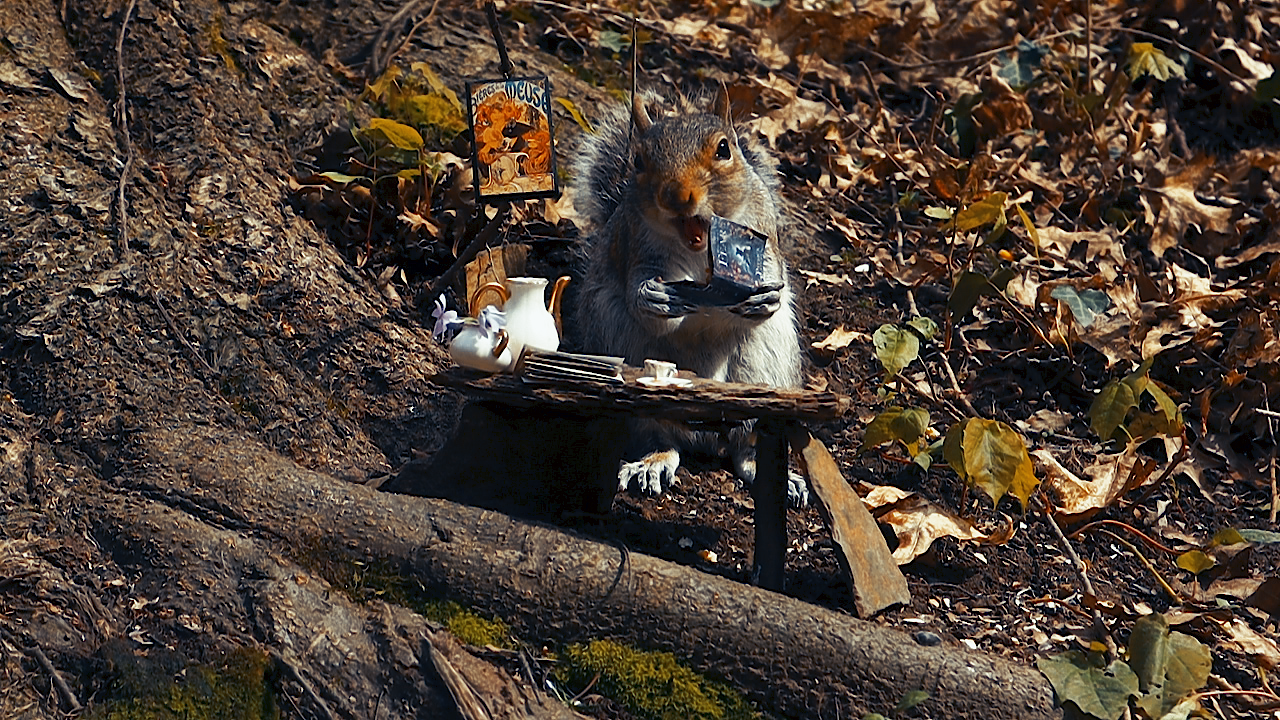
link to project: https://www.lumibarron.com/sciuridaes
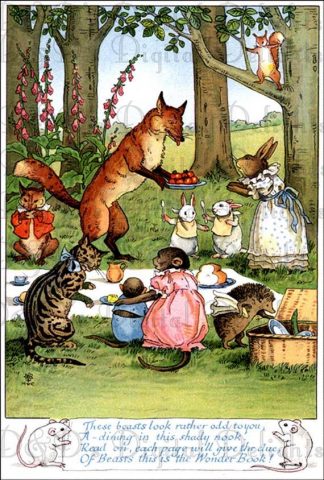 This project is inspired by children’s book illustrations of animals picnicking together in the forest, and is a continuation of the same project from earlier this semester. The squirrels perform uniquely ‘human’ activities such as reading and “baking”. They eat from tables with tea pots and snack on bagels in their kitchens. Their choices of activities, mirror how I, a human, spend my time.
This project is inspired by children’s book illustrations of animals picnicking together in the forest, and is a continuation of the same project from earlier this semester. The squirrels perform uniquely ‘human’ activities such as reading and “baking”. They eat from tables with tea pots and snack on bagels in their kitchens. Their choices of activities, mirror how I, a human, spend my time.
What I’m particularly excited about, in this set of squirrel videos, is that I think they portray an intimacy of the single squirrel room space, which unintentionally mimicked how being stuck at home all the time feels.
Gifs:
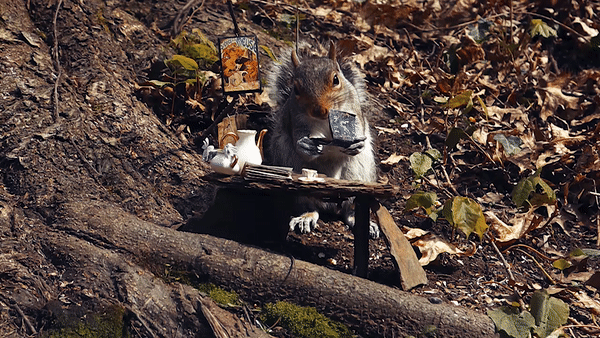

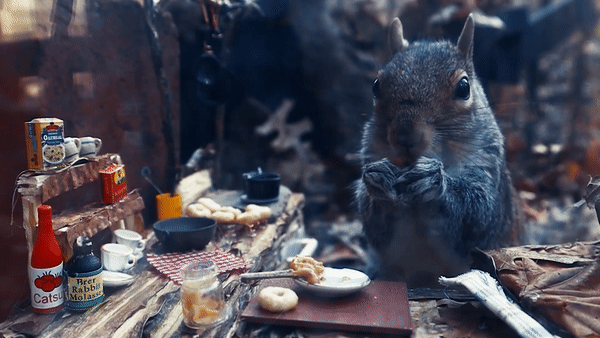
Videos:
Process:
These videos were filmed at 120fps using a Canon M50, and enhanced to a higher quality using Topaz video enhance AI. While I experimented with DAIN (video interpolation program) for different frame rates, the pace of 120 fps worked the best.
Key materials: For the span of this project, to train and film the squirrels, I have exhausted the 8lb bag of squirrel food, two bags of walnuts, 4.5 apples, some carrots here and there (trying to offer healthier options, they are getting chunky), a full jar of Jif peanut butter and half a jar of fancy Costco peanut butter (which they like significantly less than the Jif). I have also accumulated a cast of 8 ‘repeating visitor’ squirrels and in the last week an additional 5 squirrels just out of the nest.
Long usb to control camera remotely while watching for squirrels out the window:
All audio is of actual squirrel sounds from the yard. (recording studio involved an iphone 7 in a zipock bag near a pile of snacks)

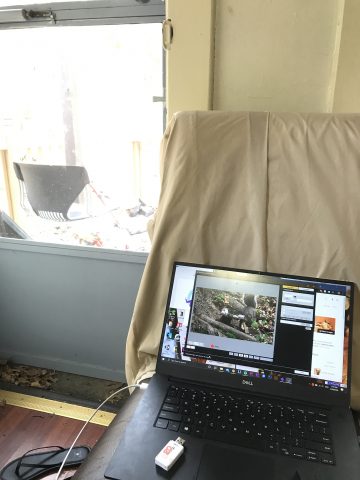
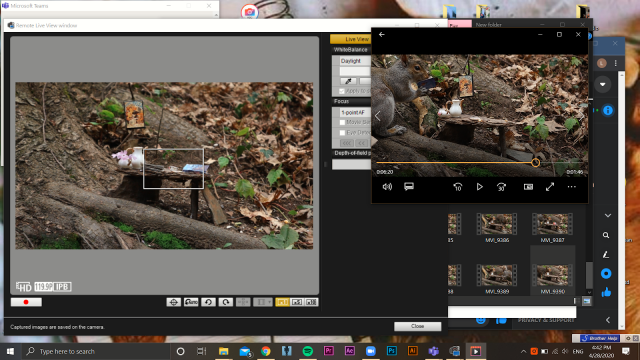
Remnants from squirrels who read:
Project 1: Squirrels
Image/tech –
Working tests with old footage in DAIN and Topaz, determined that best course of filming minimum fps is at approx 120fps – image interpolation below that, while smoothing out the motion, loses the subtleties of squirrel expression. Frames from there at 2x (280fps) feels like a good starting speed of motion, but depends on the clip.
In order to enhance with topaz, original video needs to have had really good lighting conditions (earliest squirrel clips with high iso and lots of grain, cannot effectively be ‘upped’ in quality, even with AE and Premier attempted grain removal and other edits).
Set up –
Some of the more recent shots – My thoughts: I feel leaning too far into human assembled and placed sets – feels artificial, loses the whimsy and uncanny
Currently looking to create sets that meld into the natural surroundings and lean towards ‘squirrel built’
Project 2: Sleeping Beauty
progress –
Actors: contacted and discussed means of recording audio with all but one actor in the video (have not received a response yet, but further feelers have been sent out)- of all other ‘voice actors’ 1 will be doing a recording individually (does not have the technology to join the zoom meeting (camera/recording capabilities on computer) and the rest will be meeting over zoom – current tentative schedule for this upcoming Sunday.
Script – General outline completed, exact lines in places need to be written out, (linked here, text in Finnish – subtitle translation will be done in accordance with recorded audio, not written script). Plan to do multiple recordings/ runs of the script, not for the specific dialogue, but to create a relaxed setting and room for commentary on the video as it is being watched.
Video editing – currently in progress of very light cutting. Timing of video and dialogue being developed in parallel.
Notes on tone – I have been working with mama Barron and a naturally developing tone has been that of overly dramatic narrator/storytelling, paired with the humor and amusement of watching themselves as children (a few very good moments of evil cackling happening “HÄHÄHÄÄh”).
Side note: I have also been made aware that *somewhere* there exists a Cinderella performance (with some “exceptional” evil step sisters) and a laundry detergent ad performance.
I will be continuing to create anthropomorphic squirrel videos. I have spent the past few weeks shooting, working with Topaz video enhance AI, learning color correction and grading and trying to get DAIN to work. I think the most recent shots have lost the elements of uncanny that some of the earlier shots had and have been leaning too far into constructed sets that teeter into the “cute” category. Going forward I’m focusing on finding the balance between the uncanny, whimsical, and children’s book tone.
Side projects – I have a large amount of footage that my great grandma filmed, mundane and exciting shots from her day to day. Starting off i’m working with the footage with video enhancement to see what that changes, how it affects the image. I do not have a specific goal in mind, but am treating this as a beginning for a project archive of family, place, and time.
One key elements for my projects is getting the DAIN program to function. I have had a lot of difficulty with this, but am continuing to troubleshoot.
Discovery: My camera has a fake tilt-shift program on it, and I really enjoy playing with it, it muffles images in a really interesting way.
It also feels very quiet and empty outside, fewer cars, fewer people, and significantly fewer frozen pizzas.
Walk Outside(ish), I needed to go to the grocery store to get food. Walked to one and took pictures on the way using only the fake “miniaturizing” feature.
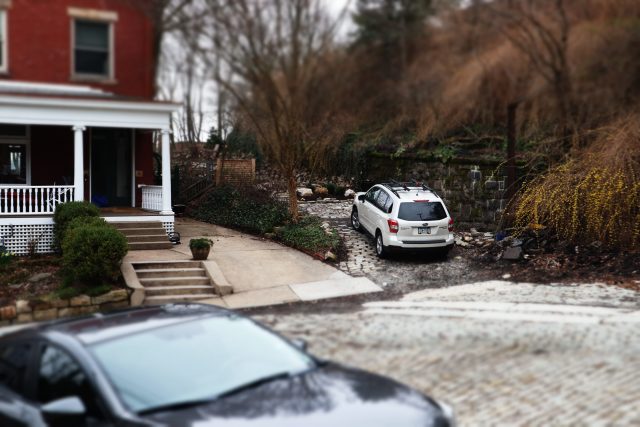
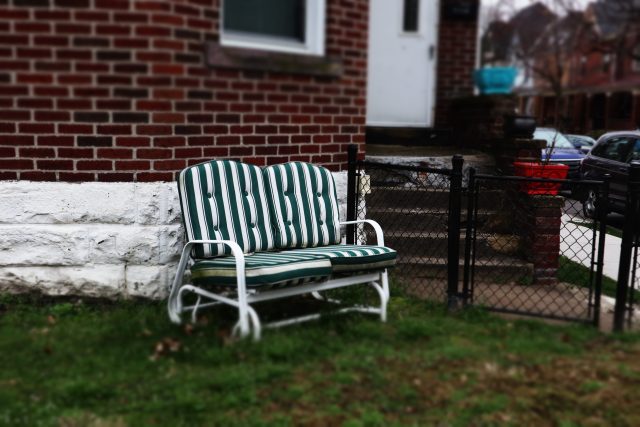
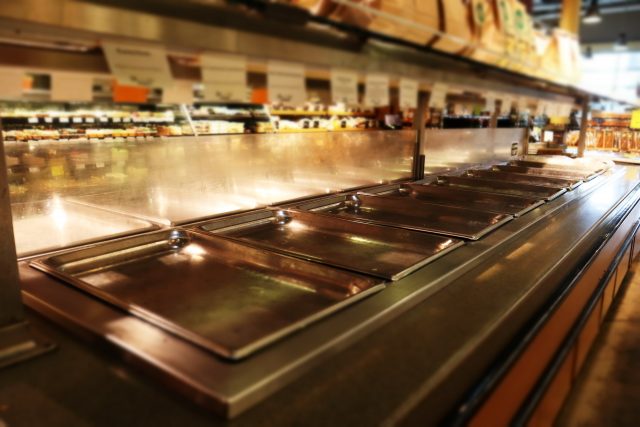
People things:
Covid-19 shifts

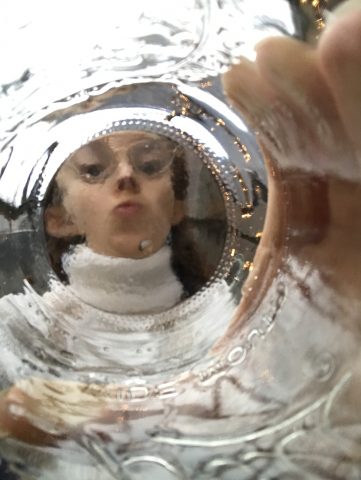
It’s like Alice through the looking glass, except a mason jar (and not Alice)!
My typology machine is a system for capturing ‘human speed’ videos of squirrels in my back yard interacting with sets that allowed for their behaviors to be anthropomorphized in a humorous and uncanny manner. It was important to me that the sets and the animals interactions felt natural but off, playing with the line between reality and fiction.
I used the Edgertronic high frame rate camera to capture these images, and over the course of 4 weeks have trained the squirrels in my yard to repeatedly come to a specific location for food.
Initial question: what lives in my backyard? what brings them out of their holes? and can I get them to have dinner with me?
Inspiration

Typology
Project link: https://www.lumibarron.com/sciuridaes
instagram @sciuriouser_and_sciuriouser
Process
Bloopers: https://www.lumibarron.com/copy-of-sciuridaes
Sets Images:
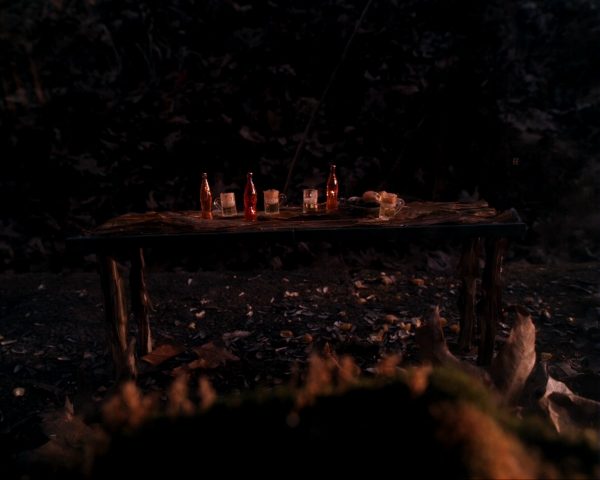
Set Up:
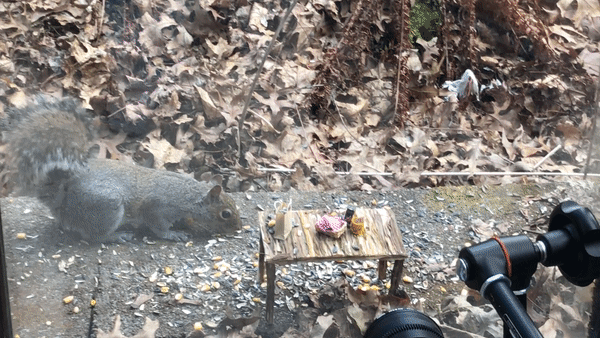

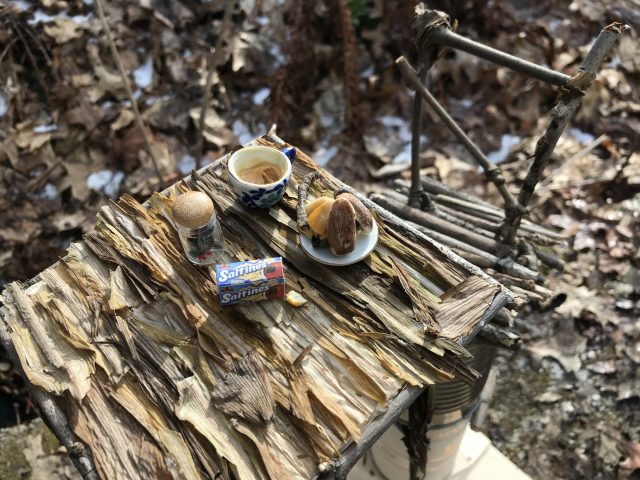
Observation window set up – 100ft Ethernet cable leading from camera in greenhouse to laptop – image projected onto an external monitor for larger view and to allow other work to be done while waiting for the squirrels to make their way to the table.
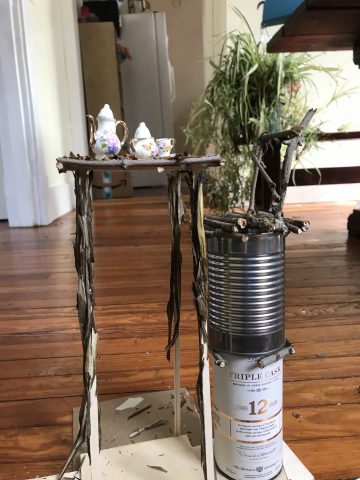
an initial table set up – while still attempting to get the squirrels to sit in chairs. Soon realized that this was not feasible. Squirrels are incredibly stretchy.
Challenges:
One of the greatest challenges arised from the limitations of recording time and processing/saving to memory card speed capabilities of the Edgertronic. At a full resolution image (1280X1280) at 400fps the longest possible recording time capped at 12.3 seconds. The then processing time for this footage took just over 5 minutes. This heavily limited the amount of footage or interaction captured, as often once the video was done saving to memory, the squirrel was long gone with much of my tiny china in tow.
I ended up setting the image capture time to a shorter amount – approx. 2 seconds. This made for a significantly faster processing time and more opportunities to capture multiple shots of a squirrels interaction with the set. This also meant, however that if an interaction was captured too soon or too late, the interesting/looked for interaction was often cropped short or missed entirely. With this camera a motion tracking trigger system would not have been a useful tool to use for this project.
Another limitation/challenge was the dependency on very bright light for good images on with the high frame rate recording. Clouds, indirect sunlight, shadows from trees, too little sunlight all significantly darkened the images. I was not able to find a set up for the external light that kept it safe from the elements for an extended time and successfully lit the set as well. Footage had to be taken in a limited time window and luck of weather played a very large part in the success of the images.
Initial ideation:

Project Continued
This is a project that I will be continuing to work on throughout the semester for as long as the camera is available. The squirrel feed has attracted deer recently and I would like to begin to play with sets for different backyard creatures at different frame rates (from insects to deer, chipmunks and groundhogs). This is a project that I have enjoyed doing immensely and I have set up a system that allows me to maintain my other work activities while simultaneously observing the animals.
I am creating a system to capture at ‘human speed’ videos/images of the small animals in my backyard (primarily squirrels and the occasional chipmunk) eating at a (squirrel sized) breakfast/lunch/dinner table set up, with fine china.
I was inspired by children’s book illustrations that depict animals coexisting with each other while performing actions modeled off human events.

I have been training the squirrels in my backyard to come to a specific location for food, and setting the food on platforms that requires the animals to “sit” in a chair to reach. Their foods are placed among (and within) miniature dining sets. I will be using the high frame rate camera to capture the very fast moments in the hope to catch some actions which mimic human actions. In the case where mimicry does not occur, I believe there will be an element of humor in the “mishandling” of the human eating set up.
For my visit to the SEM I observed a tea called UnFrazzle Your Dazzle (contains: Chamomile, Oatstraw, Red Clover, Skullcap, Catnip, Linden Flower, Spearmint, Violet, Jasmine, & Love (didn’t happen to find the love in my observations, probably didn’t make it into the sample).
It was really exciting to see the textures of the dried plants and discover the pollen that had made its way seemingly everywhere.
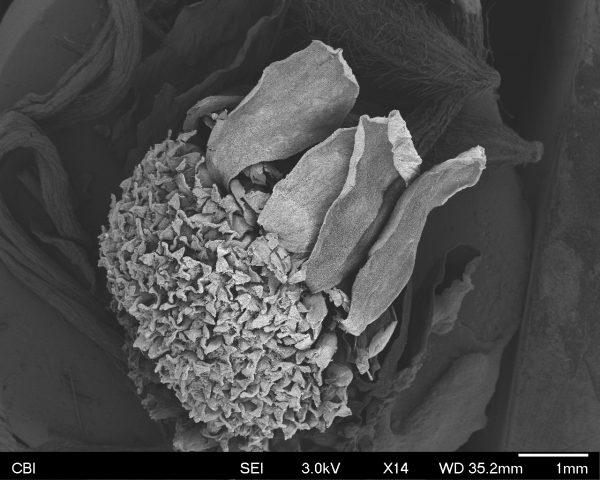
We see here the chamomile leaves and flowers. I didn’t know prior to this that what I thought of as the ‘flower’ is actually many tiny flowers in the center. They can be seen here.
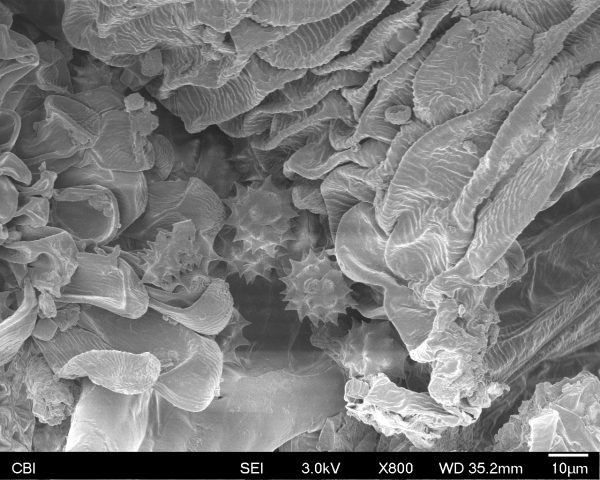
Moving in much closer, we can see pollen spores in the flower petals. The spiky looking pieces in the middle of the photo are fully formed pollen, whereas the blood-cell-like piece towards the top right of the image is an undeveloped pollen spore. The crinkled texture of the petals are due to the drying of the plant. 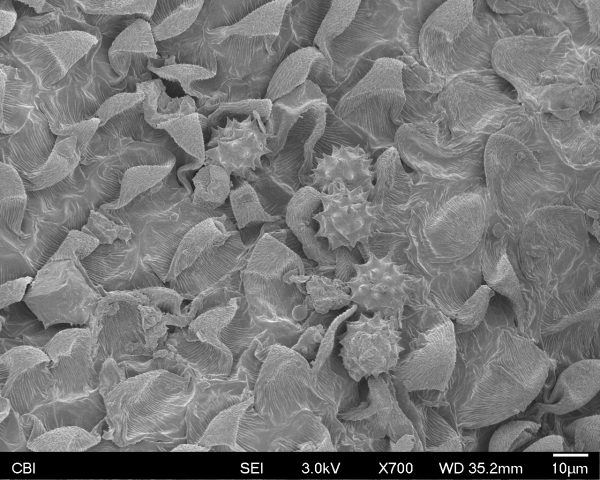
Some more pollen, pictured here on the leaf of the chamomile flower. The empty pockets on the surface are the dried cells of the leaf. Living they would be filled with water and spread smoother.
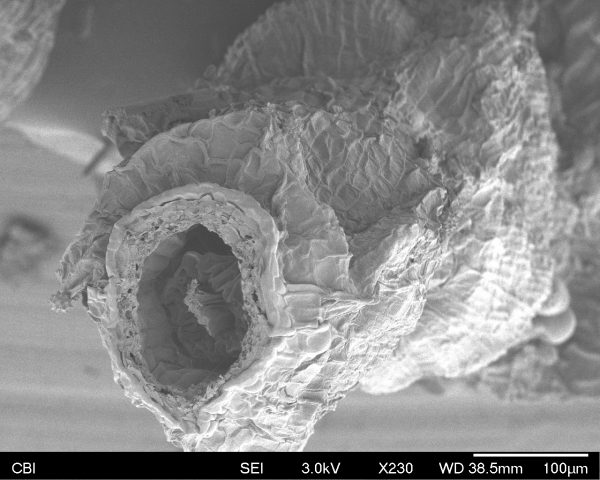
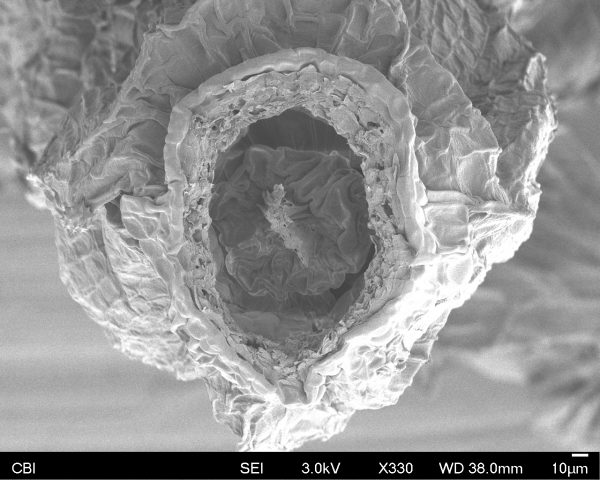
We were unsure what we are seeing here, however we can tell that it is likely a piece of some plant that has been broken off, due to the jagged edges.
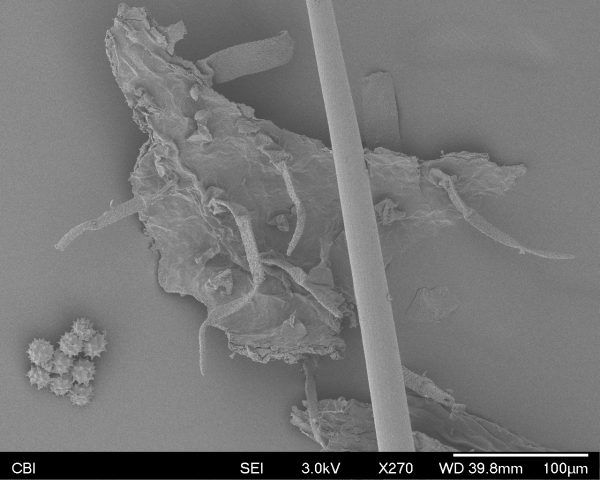
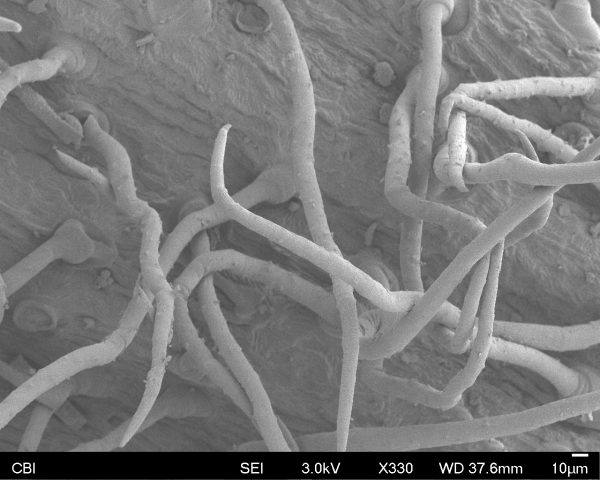
Another ingredient of the tea! Unsure exactly what plants we are seeing here as well, but the texture ad forms are fascinating!
Stereo Images:
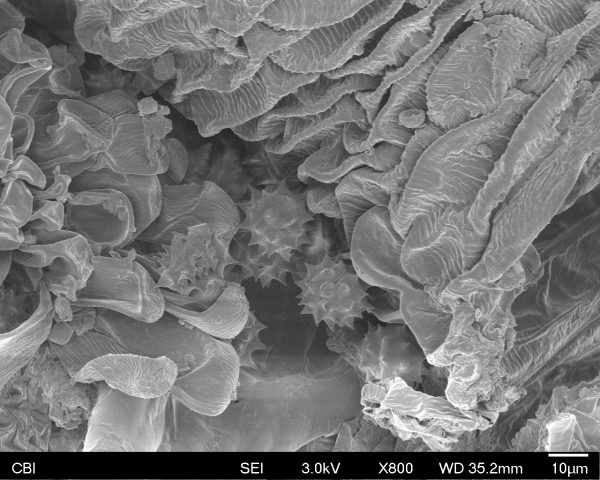

I think that one of the largest projects of “nonhuman” photography that I have experienced and am aware of is Google Earth. When considering what archaeologists can observe from past civilizations, and the excitement of discovering irrigation systems and deeper understandings of the lives of those people, the amount of information that satellite photography provides to us about certain constructions of our current civilization is insane. This sheer scale and detail of the snapshot of the anthropocene that is constantly being built upon and updated to create an incredibly detailed 3D model of the planet offers us an unprecedented view and map of our current age. This type of mapping has, and will continue to lead to new questions and possibilities.